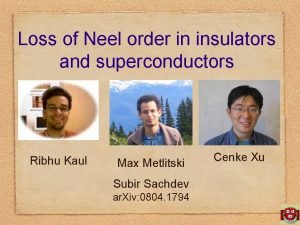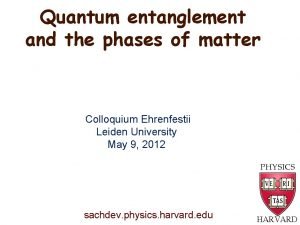16 Atomic ions simulate a quantum antiferromagnet PFC

- Slides: 1

16 Atomic ions simulate a quantum antiferromagnet PFC researchers explored how to frustrate a quantum magnet comprised of sixteen atomic ions – to date the largest ensemble of qubits to perform a simulation of quantum matter. The green laser is an tunable weak link in the circuit that can switch off the atom current Physicists engineer a quantum magnet using lasers and ion qubits. Each ion has two internal energy states that make up a qubit. Laser beams can manipulate the Coulomb force to create tunable, long range magneticlike interactions, where each ion qubit represents a tiny magnet. At left: Camera images of different magnetic states of the ion crystal. The orange glow (dark spot) indicates that the ion qubit is in the upper (lower) state. The top two panels are the possible ferromagnetic states and the remaining lower panels are taken when the ion is in any of the antiferromagnetic states. (data for ten ions) Data reproduced with permission of Authors With the turn of some knobs (laser frequencies), the team can induce and vary antiferromagnetic interactions. The crystal can easily form various antiferromagnetic combinations, instead of the simple nearest neighbor antiferromagnet (up down). In fact, with a few technical upgrades, the researchers can potentially engineer situations where the magnets can reside in an exponentially large number of antiferromagnetic states, generating massive quantum entanglement that accompanies this frustration. The ability of adjust the range of the interaction is unavailable in real materials. This type of simulation could therefore help in the design of new types of materials that possess exotic properties, with potential applications to electrical transport, sensors, or transducers. "Emergence and Frustration of Magnetism with Variable. Range Interactions in a Quantum Simulator, " R. Islam, C. Senko, W. C. Campbell, S. Korenblit, J. Smith, A. Lee, E. E. Edwards, C. -C. J. Wang, J. K. Freericks, C. Monroe, Science 583 -587 (May 3 2013)

